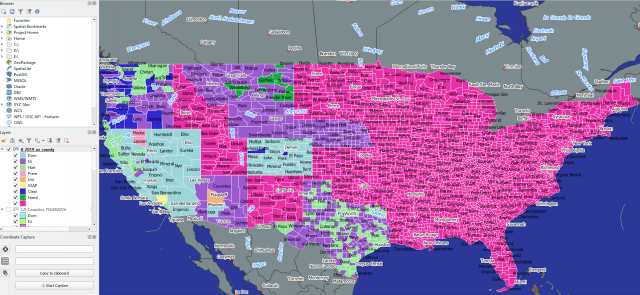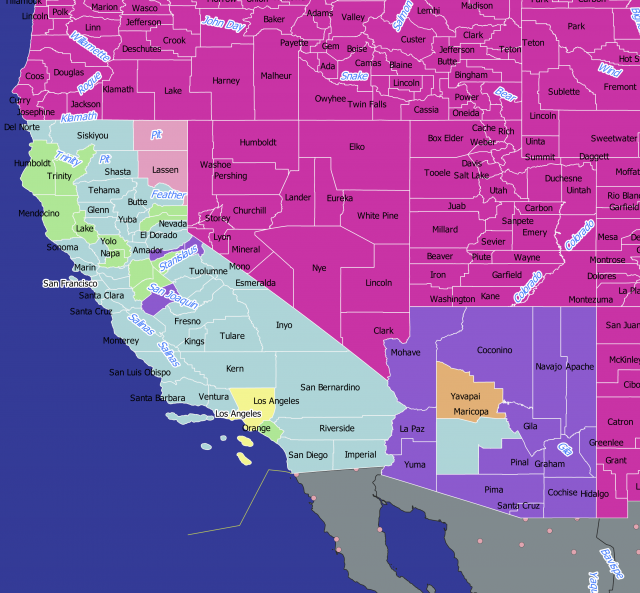“How Secure are U.S Elections?”
The Issue
The 2020 Presidential Election is quickly approaching and along with it is the question of whether the country’s voting machines are as secure as possible. Though people expect their votes to be counted accurately, there is still the possibility of hacking and voter suppression. In California, corporate vendors such as Election Systems & Software (ES&S), Dominion Voting Systems, Hart InterCivic, and others provide the state’s counties with their voting machines. How do you know that your county is using the most secure voting technology?

Figure Caption: For California, Oregon, Washington, Nevada, Arizona, and Texas in the map above, the different colors represent the voting systems used in each county. The counties in pink represent work to be done. The colors are currently provisional in order to distinguish between the different technologies that are employed.
The Vulnerabilities of Voting Machines
No voting technology is perfect. Assuming that electronic voting machines are programmed correctly, they could be more efficient than the traditional paper ballots. Currently, there are independent companies selling machinery to each county throughout the United States. Although they have the potential to make the election process more accurate, these new technologies are prone to reliability issues. Paper ballots are a reliable method of keeping track of votes because they leave a paper trail. Voting machines may be more accurate in theory, but software failure may leave no method of verifying votes if the machine is paperless. Another vulnerability appears in the form of hacking. If these machines are in any way connected to the internet, they run the risk of being hacked. Even without internet connection, voting machines can be vulnerable to malicious software attacks that manipulate results. Electronic voting machines have a trade-off between efficiency and security. One part of our project involves an interest in all variables of voting machine security and how our counties address these vulnerabilities.
What is the goal of “How Secure are U.S Elections?”?
The goal of “How Secure are U.S Elections?” is to provide an overview of the security of voting machines nation-wide. We are mapping out the specific tabulation systems in each county using QGIS. Along with the specification of each county’s electronic voting machine, we are developing a rating system to represent the security of these machines. With the help of other student organizations around the country, we aim to elevate the project to a nation-wide effort in reviewing the security of the United States’ voting machine technology and raising awareness on the potential vulnerabilities of these technologies, and to provide a representation of these vulnerabilities that exist nationwide.

Figure Caption: For California and Arizona in the map above, the different colors represent the voting systems used in each county. The counties in pink represent work to be done. The colors are currently provisional in order to distinguish between the different technologies that are employed.
If you are interested in joining the effort, contact us at howsecureareuselections@gmail.com
Project Participants:
Definitely Vote!
Our goal is to raise awareness of voting issues as well as to provide information for local communities to respond accordingly. We believe that social justice efforts in the U.S. still have a long way to go, but we also believe that they can be productively advanced through strong democratic participation.
Mail In Ballots (=Absentee Ballots)
What happens when we shift from in-person voting technology to mail-in ballots? Do we also shift counting practices?
